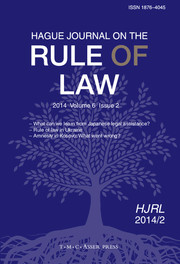Article contents
Measuring the Costs and Quality of Paths to Justice: Contours of a Methodology1
Published online by Cambridge University Press: 30 September 2011
Extract
Legal problems and justice needs are similar in different jurisdictions and different locations. Processes for resolving them, as well as rules determining outcomes, however, vary widely. Measuring the price (costs) and quality of such ‘paths to justice’ from the perspective of the user is likely to enhance users' choice, enable comparison and learning, to increase transparency, and to create incentives for improving access to justice. This paper discusses the contours of a methodology for this purpose and of some concrete tools for measuring costs, procedural quality, and outcome quality. Conceptualization of a path to justice, criteria and items included in the measurement framework, as well as different data collection methods, are presented. Experiences from two pilot studies give insight into the challenges that lie ahead, and in the potential uses of the (developing) measurement methodology.
Keywords
Information
- Type
- Articles
- Information
- Copyright
- Copyright © T.M.C. Asser Press and the Authors 2011
References
1 This study was facilitated in full by the Hague Institute for the Internationalisation of Law (HiiL) through the sponsoring of a research project titled Measuring Access to Justice in a Globalising World, The Hague Model of Access to Justice.
- 9
- Cited by

